My Review of the Science Basics Training in KSP

What's up Gamers?!
For this episode of Let's Play Kerbal Space Program, we're launching into the Science Basics Training Exercise as our last stop in the Tutorial Subsystem of the Kerbalverse before launching back into our Career Mode Gameplay!
I should also note before we get started, that all pictures within this post are from the KSPedia, which can be found at the Kerbal Space Program websites Learn Page!

Training Overview
In this Tutorial, we're going to learn all about the science aspect of the game, including how we can get more science points, what we can do with those points, and where we can find a list of all the experiments we've completed throughout our KSP career!
So without further ado, let's play!

Research and Development Building
To start this training exercise, we're going to head on over the the Research and Development Building within our Kerbal Space Center to get started!
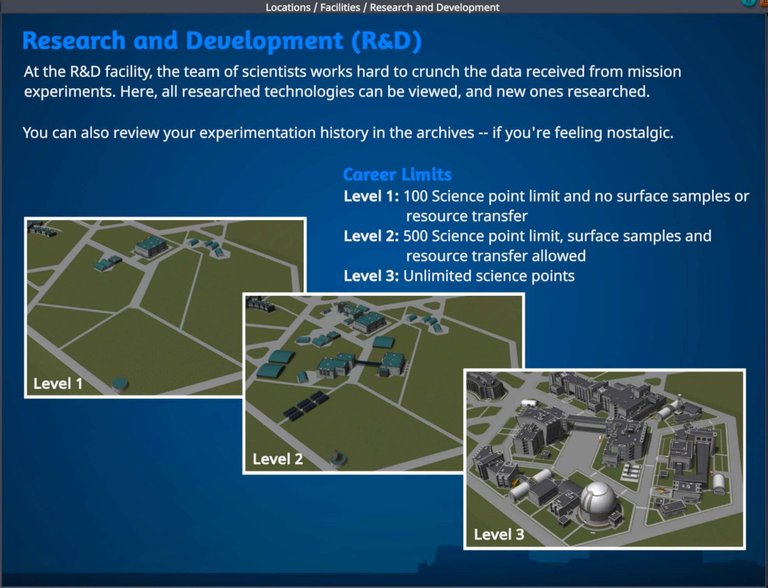
Once inside, we are able to see all of the Research Nodes within the Technology Tree!

Tech Tree
Like other videogames, Kerbal Space Program also has its own technology that must be researched in order to advance your career.
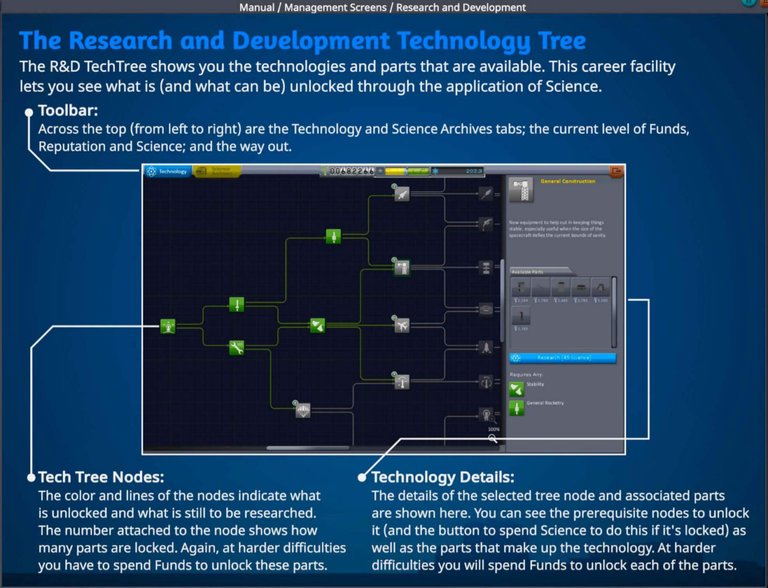
The Tech Tree is a comprehensive list of all of the unlockable research nodes, and what parts you unlock once you have researched the node. You are also shown how many science points are required to research the node, allowing you to plan out your specific gameplay style!
When we first begin our career, we only have the Start Node unlocked, which contains all of the most basic rocket parts and scientific experiments in the game.

How To Unlock Research Nodes
To research a new node within the Tech Tree, and unlock the new parts within it, we must spend our hard earned Science Points!

The next two nodes available to be researched are Basic Rocketry for 5 Science Points (or SP), and Engineering 101 for 5 SP.
For this tutorial, Werner Von Kerman gives us a few Science Points to be able to spend on researching a new node, and since we can only afford to research one node, this allows us to experience scientific research first hand!
However, during our career mode gameplay, we will have to earn our own Science Points in order to be able to start researching new nodes within the Tech Tree!
With the way the Tech Tree is set up, we can also plan our researching ahead of time, and determine which node is best to focus on by taking a look at the parts it unlocks!

How to Earn Science Points
Luckily for us, there are numerous ways to earn Science Points throughout our career mode gameplay!
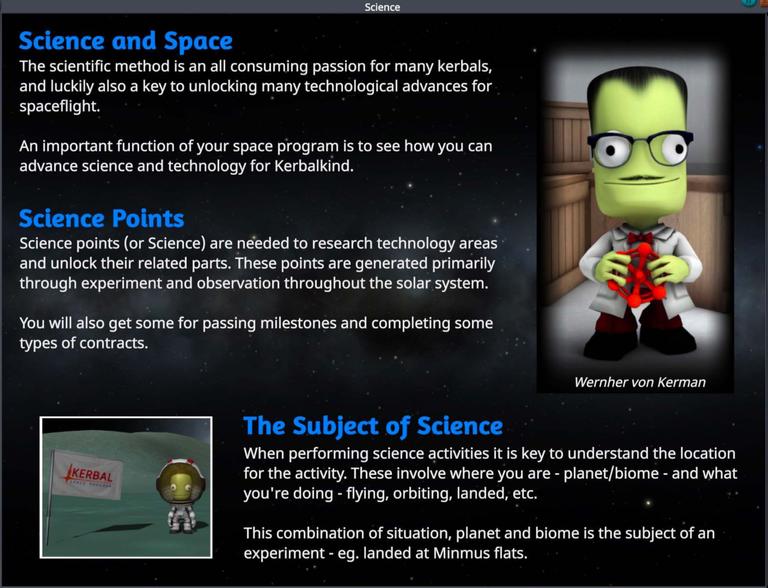
First off, we can collect valuable research data by performing crew reports, completing different contracts, collecting various samples, equipping our craft with various experiments (such as the Goo Containment Unit) and using them during flight!
In order to actually perform these activities, we must open the corresponding Contextual Menu by Right Clicking on the Part or Experiment we need to use!
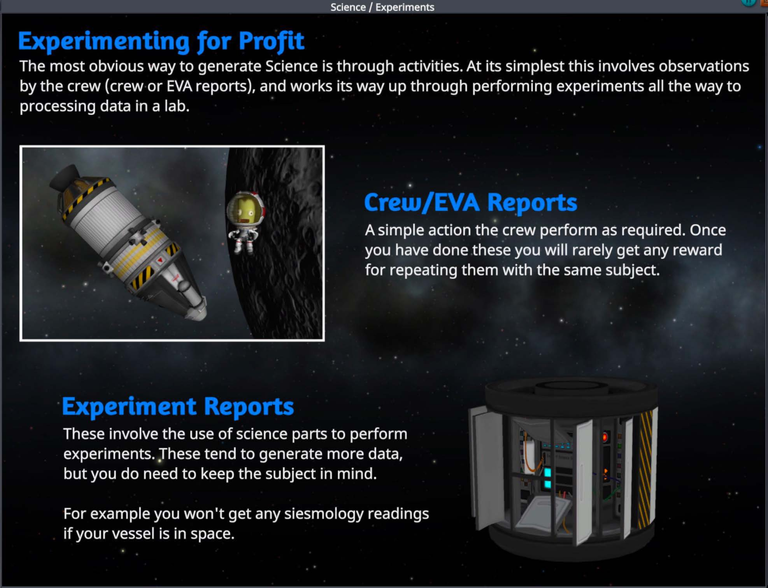
So, if we want to Take a Crew Report, we would Rick Click on the Command Module.
If we want to perform a specific scientific experiment, such as taking a temperature reading, we would Right Click on the experiment itself, such as the 2Hot Thermometer.
If we want to actually put the data obtained from the experiments or reports to use, we must return safely, or successful transmit the data, back to Kerbin in order to turn the science data into Science Points.

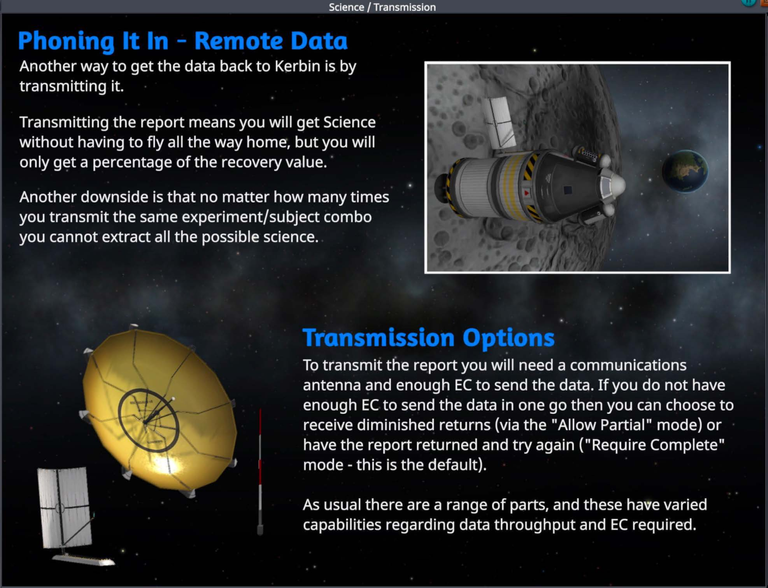
Now, just in case you don't remember what experiments you have performed, all of our progress is tracked and recorded for future reference!
Where you might ask?
In the...

Science Archives!
The Science Archives is loaded with valuable information, and is a great place to go if it's been a while since you played and need a refresher on what you've achieved so far in your career!
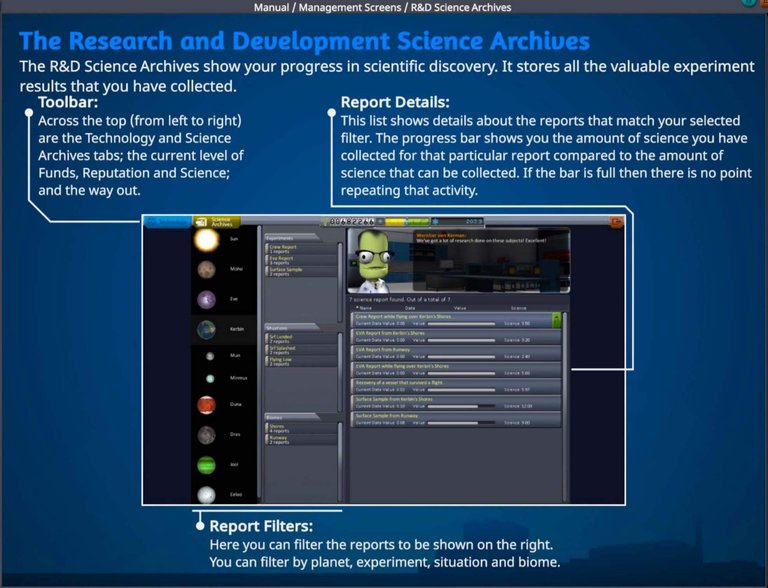
The Science Archives shows:
- What science based activities we have performed throughout our KSP Career
- When they were completed (in Career Time)
- Where they were completed (which Celestial Body)
- Who completed the activity (Pilot or Crew Members)
And, - How much science was recovered for that specific activity!
But with that being said, it's never good to repeat the same experiment multiple times!

What Happens When you Repeat Experiments?
If you happen to perform the same experiment multiple times in around the same celestial body, the value of the data diminishes over time!
This happens because if we perform an experiment we have previously completed, then we already knew part of the answer to the question. Some things may change slightly, but for the most part, we already knew what the end result would be.
The best example of this is during our rocket recoveries during Episode 1, when we receive a total of 5 Science Points for our First Recovery, but we only received a total of 0.8 Science Points for the Third Recovery!
For this reason, it is imperative that we perform different experiments around a specific body, so we can maximize our Science Point earnings!

Celestial Bodies and Scientific Information
By default, we will begin with an overview of the scientific experiments completed around Kerbin. But, to the left of the Science Archives is a basic depiction of all of the Celestial Bodies within the Kerbalverse!
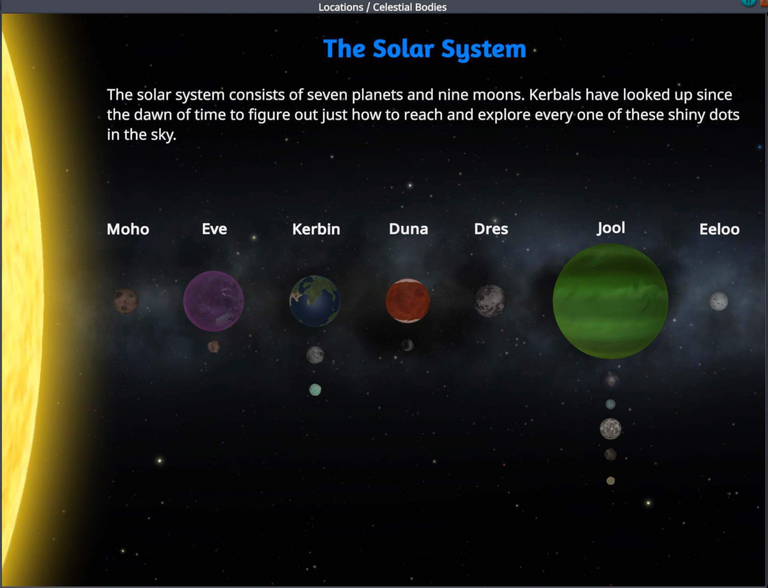
Once we start completing missions to the various Celestial Bodies, and completing different experiments around them, we can find all of that information by clicking on the specific Celestial Body we visited!
Although this tutorial didn't really talk about the Celestial Bodies themselves, the KSPedia does contain a little information about them, which is shown below!
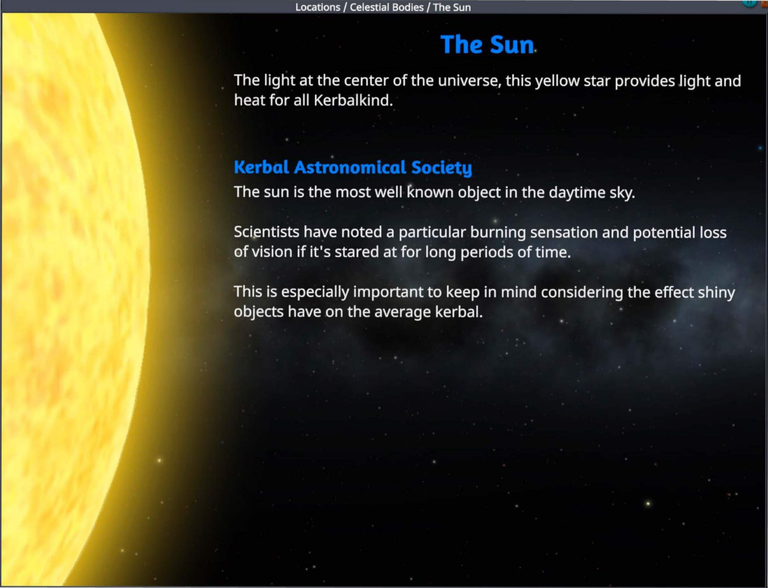 | 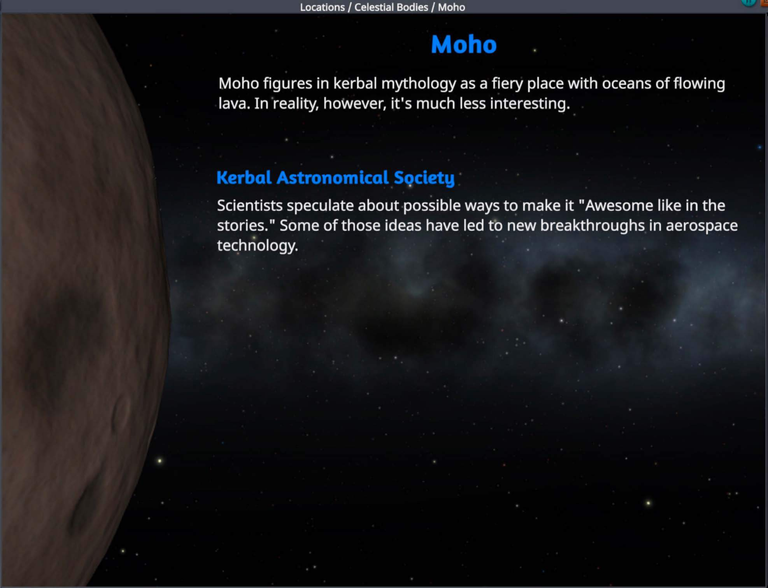 | 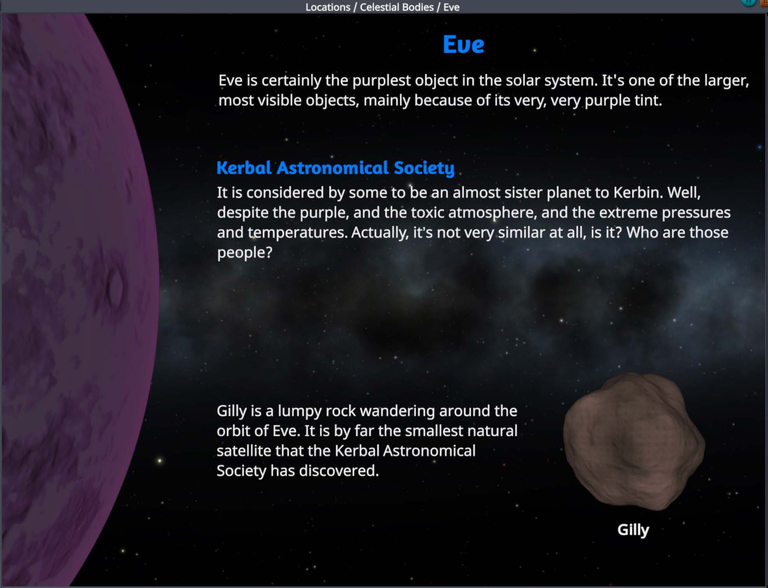 | 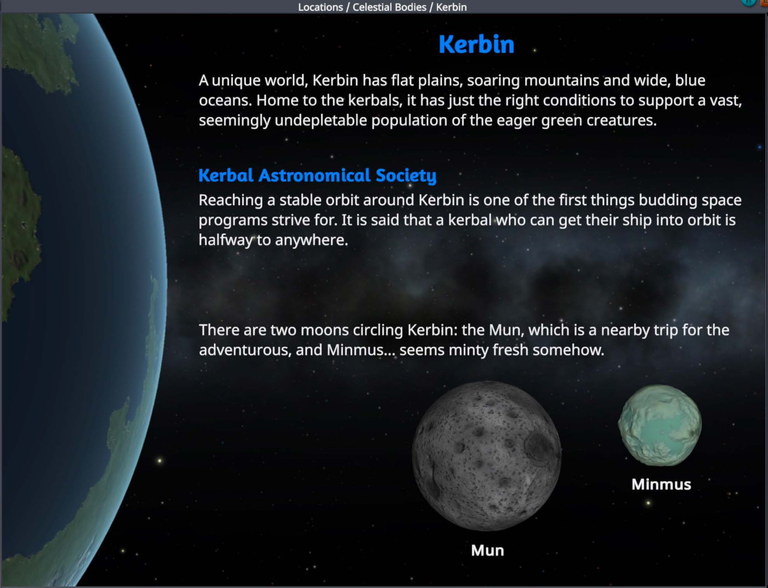 |
|---|---|---|---|
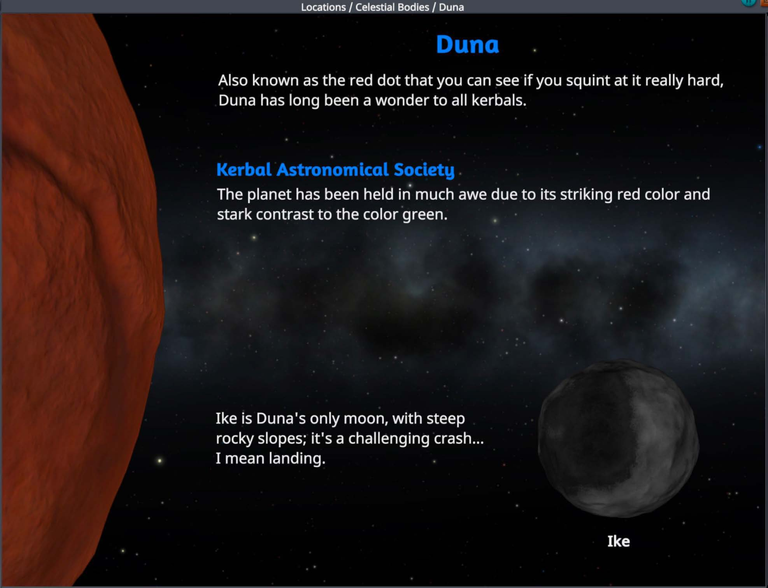 | 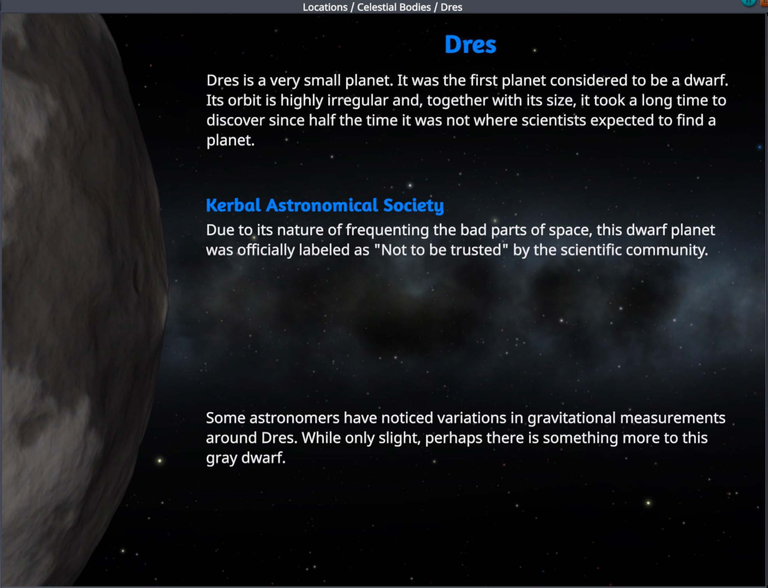 | 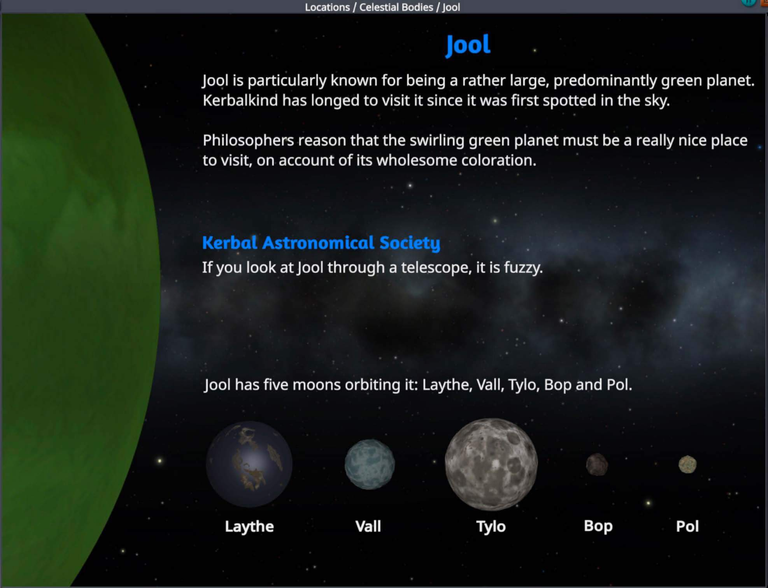 | 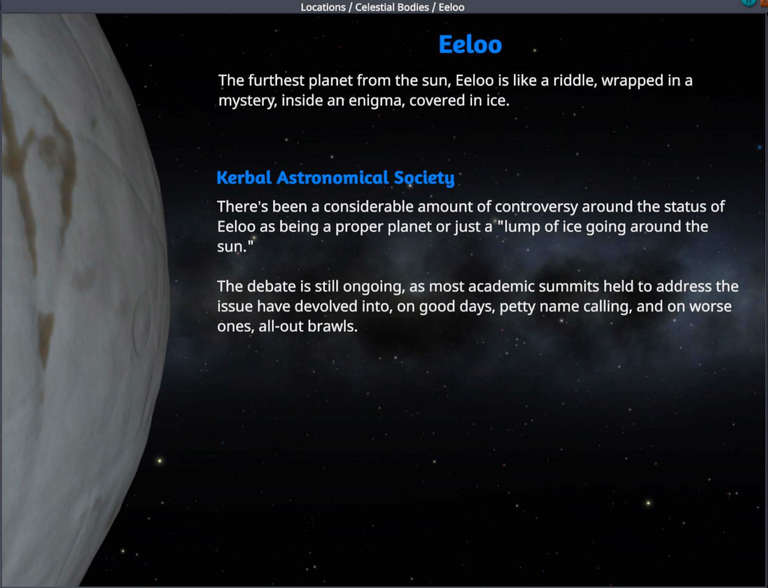 |
This will definitely come in handy as we progress through Career Mode, and attempt to perform as many experiments on as many Celestial Bodies as possible!

Training Review
With this Training Exercise under our belts, we now know the very basics of why science is so important to our career mode gameplay, how to complete various tasks to obtain more science points, and how to unlock new research nodes to further our reach to the stars!
We also learned where we can find our previous scientific reports, and which Celestial Body they were performed on, giving us a valuable source of information for future missions!
And finally, we learned what happens when you perform the same experiment multiple times, and why it is important to change up your research!

Thank you all for tuning-in to this update, and I hope you enjoyed!
I love hearing from you! Don't forget to reply with any questions, comments, or even if you have any suggestions for me as a content creator!
Subscribe/Follow me on social media for the most current Spaced-Out Adventure, and to witness the growth of a new YouTube channel and community!
Until the next adventure,
Stay Toasty My Friends!
The Anarchist ✌🏼💚

My son used to play this game all the time. I didnt understand it at all when I tried it.
There is definitely a learning curve to it, and I had no idea what I was doing when I started either lol it has been a challenge, and a lot more learning involved than a typical game, but I think that is what will make it a good game to complete! I have a few friends and have been told by a few others that they quit playing shortly after reaching the Mun, which is only the first celestial body you can explore! I just hope that I can make it all the way through! 😂 Do you happen to know how far your son explored?
Congratulations @the13anarchist! You have completed the following achievement on the Hive blockchain And have been rewarded with New badge(s)
Your next target is to reach 600 comments.
You can view your badges on your board and compare yourself to others in the Ranking
If you no longer want to receive notifications, reply to this comment with the word
STOPTo support your work, I also upvoted your post!
Check out our last posts: